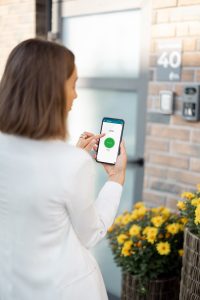David Jennings, CEO of UAP, explains the drivers behind the launch of a new ultra-secure electronic lock and how a focus on the customer experience has shaped its development.
Smart technology is rapidly filtering through all our lives. From smart bulbs and speakers through to the with Internet of Things (IoT), the technology is all around us. People of all ages are now turning to smart home tech, a trend largely been driven by the pandemic which forced everyone to more actively engage with online tools.
This shift in consumer behaviour has accelerated the launch of smart door locks with consumers now faced with a variety of options aimed at improving convenience and security. UAP, like many other manufacturers, has stepped into the smart market but our journey began five years ago. What followed was extensive research, planning and testing aimed at developing a concept unlike any others.
 Avoiding risks
Avoiding risks
We began by researching customers’ priorities and the factors needed to provide the best possible experience. From the outset, this saw us disregard biometrics such as fingerprint readers as they could cause a host of problems. Say for example, a homeowner was carrying a bag of shopping on a cold and rainy day. Having to put the bags down at their door, remove the gloves and get a fingerprint reader to work spells hassle. There is also a risk of the reader not recognising the print or the technology shutting down if it gets too hot.
The other major concern was security. It is a fact that hackers have stolen, and will steal, digital fingerprints and other biometric data. Once your biometric data is stolen then you can’t simply change it – it is lost forever and that means your security is also jeopardised for the long term.
Prioritising needs
People want to be able to shut their door and for it to automatically lock, without having to lift a lever and turn a key. They want a choice of tools for locking, and the process needs to be audible, so it is clear the door is secure. At the same time, we learned that in some instances, the consumer may want to reduce or extend the time it takes the door to lock, if for example, they had forgotten something in the house.
If the door lock is operated using a smartphone App, that needs to be simple too. And the App must offer functions that provide the flexibility demanded by customers such as enabling friends or family to operate the lock.
Regarding security, we recognised that some people were worried about keyless car theft and shared similar concerns about an electronic door lock. To address this, we needed to develop technology that would make the key fobs ultra secure.
Meeting consumer demand
Armed with our research and a clear picture of how we could improve the customer experience, we spent five years developing the IONIC. The electronic lock is the first in a series of ‘smart’ products set to be launched under UAP’s Fullex Ai brand.
Simple to install and easy to use, the IONIC can be operated using a smartphone App, a fob, push button on the inside, or a thumb turn. When a consumer gets to the door, they simply press the handle down and walk in.
The time it takes for the lock to activate can be adjusted to suit the consumer. The App can be used to set up new users and time settings, allowing one off access for workmen or regular access for cleaners or carers for example.
Security is enhanced through face recognition, which builds additional authentication into the App. The fobs have been manufactured in a way that prevents them from being cloned and the lock itself holds no data with the user’s own phone controlling the system rather than a server.
To make the IONIC as reliable as possible, we based it on the Fullex Crimebeater lock which has a proven track record. The electronics have been developed by a specialist manufacturer in Europe and every printed circuit board is tested multiple times before being shipped to the UK for assembly.
